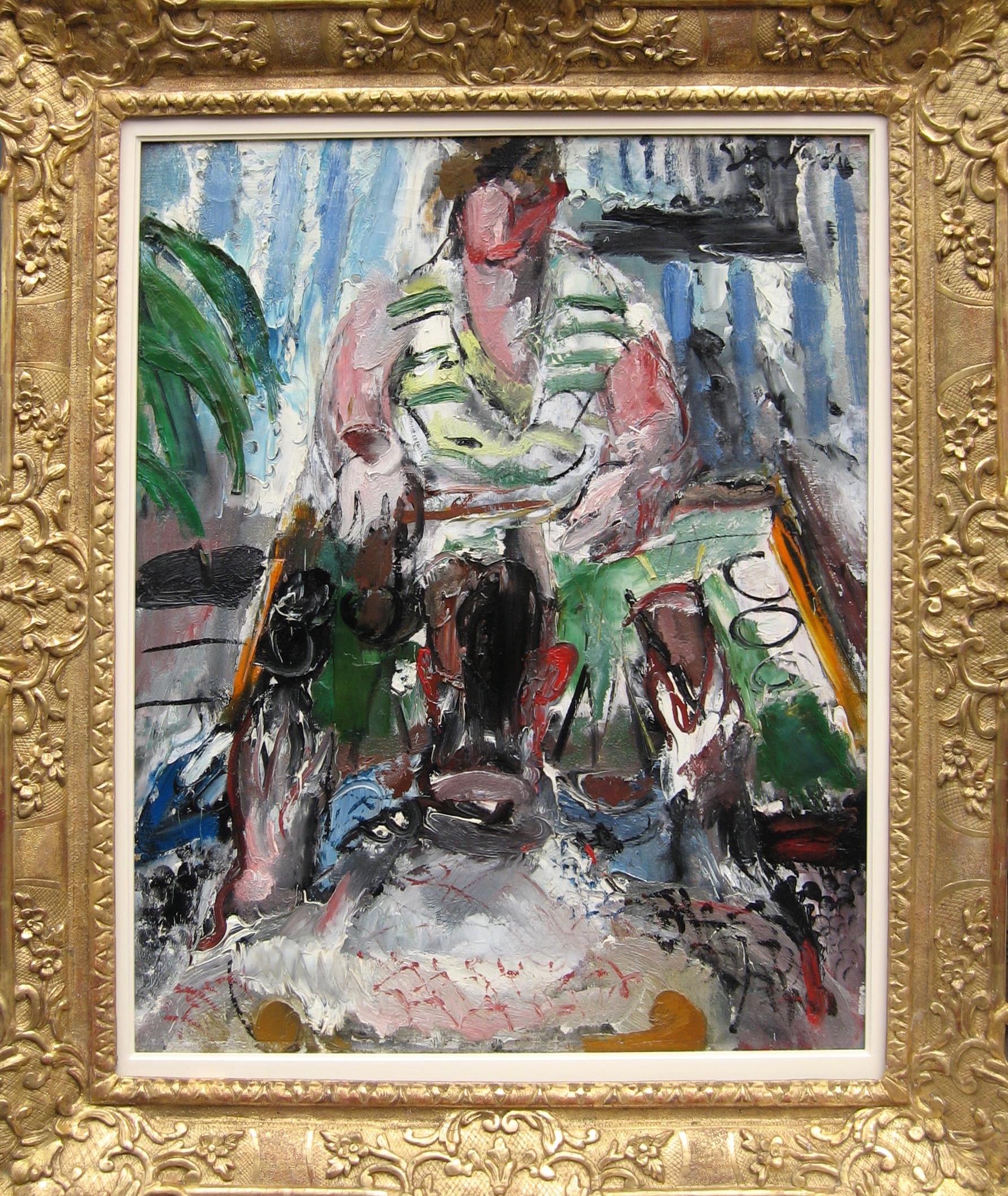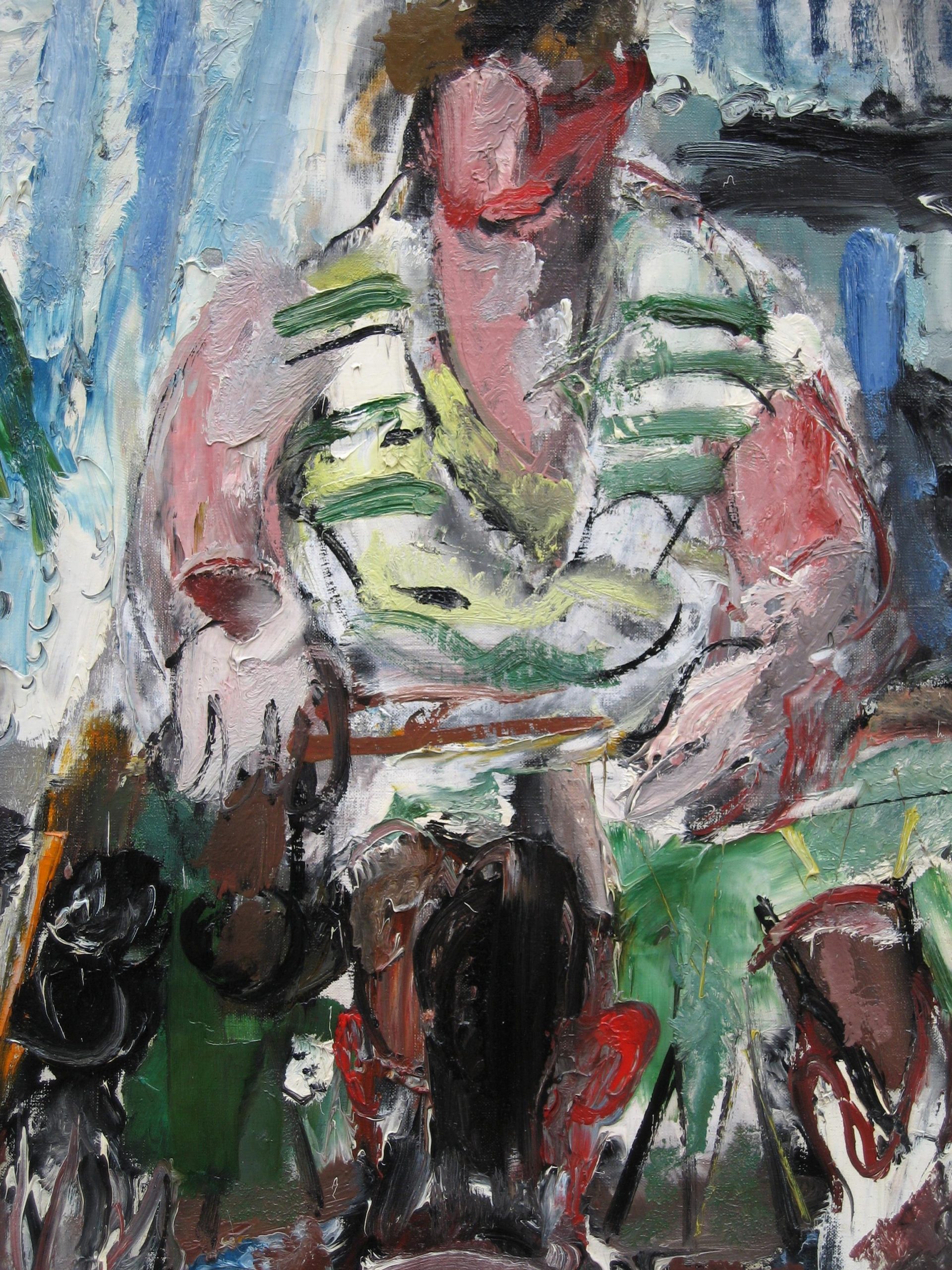gen paul
The backgammon game, around 1927-1928
Oil on canvas
Signed and titled on the back “La partie de jacquet”
Size: 81 x 65cm
With frame: 105 x 88 cm
Price upon request
“Jacquet’s Game”, a striking, lively work by Eugène Gen Paul circa 1927-1928
This captivating painting depicts a backgammon game between two people, a man and a woman. The woman is seated in the background, while the man’s hands and head can be seen in the foreground. Gen Paul’s energetic brushstrokes and vivid colors breathe an infectious energy into this everyday scene. The figures are depicted in an abstract manner, giving the painting a modern, dynamic feel.
“Jacquet’s game is a testament to Gen Paul’s undeniable talent.
Biography
Eugène Paul was born rue Lepic, in the heart of Montmartre. His mother was an embroiderer and his father a café musician. He began to paint at an early age. His apprenticeship is original: as an apprentice interior decorator, he looks around him in the rich apartments.
Passionate about painting and eager for knowledge, he observes the works collected by art lovers, wherever his work has taken him. In addition, he learns about human anatomy by getting to know surgeons and accompanying them to operating rooms. He completed his training during the few years he attended the Ecole des Beaux-Arts in Paris.
In 1913, he volunteered for the front and was wounded. A year later, a second injury led to the amputation of his right leg. Back in Paris in 1916, he began to paint. His first oil painting – the Moulin de la Galette seen from his window – dates from 1916. From then on, Eugène Paul began his career as a painter. It represents many views of Paris to satisfy demand.
He signed for the first time a painting “GEN-PAUL” in 1918. In 1920, he exhibited at the Salon d’Automne, and remained faithful to this institution, as well as to the Salon des Indépendants. He travels to Spain and confronts the masterpieces of the masters: Goya, El Greco, Velasquez… On his return, he uses black even more in his compositions.
His first personal exhibition took place at the Bing Gallery in 1926. He illustrated several books by Céline, including Voyage au bout de la nuit and Mort au credit in 1942. He made engravings, some of which were published in a collection entitled Vues de Montmartre .
At the end of World War II, he traveled frequently to the United States and New York. At the time, he held the title of general. In 1952, the Drouant-David gallery in Paris devoted a retrospective to him.
Besides the annual events of the Parisian art scene (the Salons), Gen Paul exhibits only exceptionally. Indeed, the artist refuses to work with galleries, he does not depend on any of them. At the end of his life, he traveled frequently to France and Spain.
Museums:
Posthumous group exhibitions include:
. Roussard Gallery, Paris (1999)
. Roussard Gallery, Paris (2002)
Gen-Paul is exhibited in France,
. In Paris: National Center for Plastic Arts; City of Paris Museum of Modern Art; National Museum of Modern Art – Center Pompidou; Bourdelle museum
. In the provinces: Les Abattoirs, Toulouse




